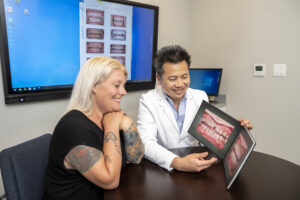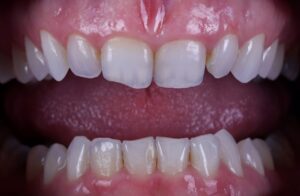Ceramic Porcelain Fracture Guidelines #4: Anterior Guidance
When anterior guidance cannot be achieved, ceramic porcelain fracture is more likely to occur.
by Dr. John Nosti
In this series, I have focused on the methodology behind understanding a patient’s past dental history. Too often, dentists find themselves with a non-compliant or fracture-prone patient and don’t realize that a more methodical approach is appropriate in these cases. Too improve the quality of your ceramic restorations, follow the guideline below.
Protect Patients Where Anterior Guidance is Not Achievable
I use the term “protect patients” so often in these guidelines to underscore the importance of protective appliances. It is a precaution that can prevent an otherwise flawless case of restorative dentistry from being marred by a porcelain fracture.
Broken dentistry and fractured temporaries (which I discuss in previous blogs) are only the beginning of the tendencies that can make a patient more likely to experience fracture.
To prevent fracture, you must go beyond the standard verification for anterior guidance. Normally, you might only mark contact into closure and ask the patient to grind from left to right. To be truly thorough, you must make the extra effort to check your patients’ cross over and laterotrusive patterns.
Functional considerations are your friend here. If a patient contacts only on their later incisors in cross over or goes into a laterotrusive movement and contacts their lateral incisor only, there are two options you should discuss with them:
- Shortening the length of the laterals or the opposing tooth/teeth.
- Wearing a protective appliance.
Anterior guidance must be achievable in all excursive movements if you are to assume the restoration will be successful. It is critical to take this extra step and ensure a clinically sound result.
Look for the final two guidelines in this series to learn how to limit the percentage of porcelain fracture in your dental office. These tips are a compilation of ceramic restoration knowledge that I have put together over 10 years of performing “cosmetic rehabilitations.”
Read the first three guidelines in Dr. Nosti’s ceramic porcelain fracture series. He discusses the best approach to occlusion for preventing fractures and why you must evaluate a patient’s past tendency to broken temporaries and dentistry in general.



